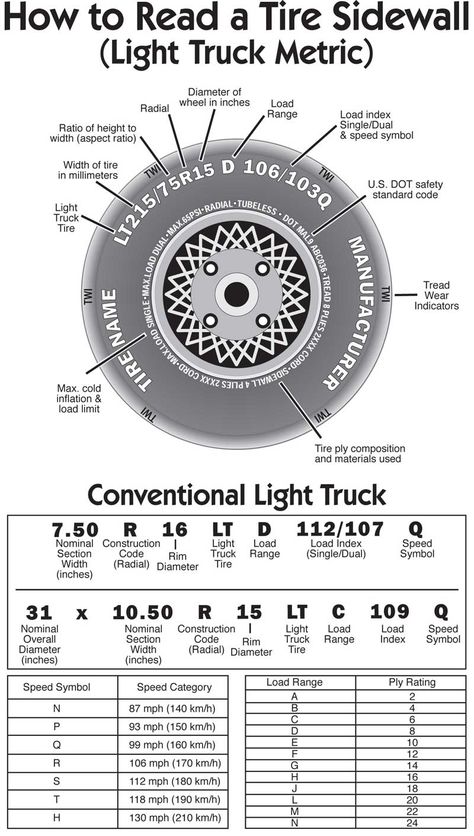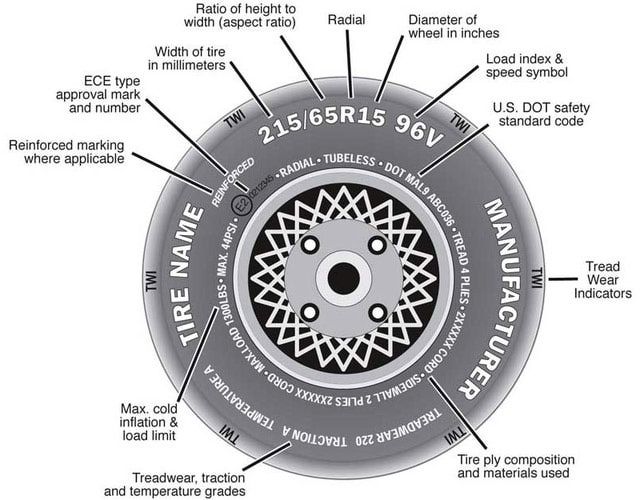As you may already know, patching can be an option for fixing a flat car tire or motorcycle tire. But does it work on ATV tires? After all, ATV tires are typically used in much rougher conditions when going off-road. Like with so many other problems you can stumble on as an ATV owner, no one answer fits all.
ATV tires can be patched, depending on the size, shape, and location of the puncture. Minor to medium holes in the threaded area of the tire can be patched using a traditional patch or preferably a plug patch. More extensive tears or sidewall damage cannot be permanently fixed, but temporary solutions are available for emergency repairs.
So how do you know whether your specific puncture can be patched? And when should you choose to patch over other alternatives such as a string plug, tire slime, and others? Here are some guidelines to follow.
Not all tire leaks and punctures are the same. This is important because the type of leak you face dictates the best method for fixing the leak.
Just as there are different types of tire leaks, there are various ways of fixing them. Not all holes can be patched; other methods may be better suitable.
There is also a difference between repairing a car tire and a slow-speed, such as an ATV tire. For car tires, you are only allowed to repair a tire if:
ATV tires for off-road use are not subject to the same regulations, but they still make for good guidelines, especially if you do a lot of high-speed trail riding or racing.
The sidewalls are the weakest part of any tire. Because the sidewalls of a low-pressure tire need to be flexible, they have less rubber and lack some of the steel or nylon enforcement used in the threaded area for puncture resistance.
The flexible nature of the low-pressure tire sidewalls makes them more prone to tears and harder to repair. While you might be able to patch a tear in the sidewall, it may not last too long, especially if you run the tire at low pressure. As soon as you go over a rock, the sidewall will flex, making the patch the weakest link.
There is no proper way of permanently repairing a sidewall tear or puncture. However, there are a few aftermarket options to consider that will get you by if you’re in a pinch.
Note that products such as sidewall repair kits or sidewall slugs are not meant as permanent repairs but simply emergency repairs until you can replace the tire. They are only for slow-speed, off-road use and should never be used on high-speed or on-road tires.
There is no safe or legal way of repairing the sidewall of an on-road tire. Your only option is to replace the tire with a new one. If your other tires are worn, you may need to replace them as well to prevent driveline wear or damage, especially if you ride a lot on paved roads.
Your typical minor puncture happens from running over a nail, a piece of wire, or any other small and sharp metal object. The air may leak out over a few hours or a few days if the protruding object is still stuck in the tire.
These punctures are typically easy to fix, both temporarily out on the trail or permanently when you get back home to your garage or a tire shop.
Most small punctures up to ¼ inch in diameter in the threaded area of a tire can be permanently repaired from the inside using a plug patch. However, the angle of the puncture should be at least 45 degrees or more to the tire.
Patching from the inside is the recommended method for fixing smaller punctures, and it’s the only one that is considered by the industry as a permanent repair if done correctly. An inside patch plug will more than likely outlast the remaining lifetime of your ATV tire.
Related: How to patch an ATV tire – Illustrated Guide
If you’re out on the trail or just looking for a quick fix, you can fix most small punctures using what is commonly referred to as a string plug kit or rope plug kit—more on the pros and cons of string plugs vs.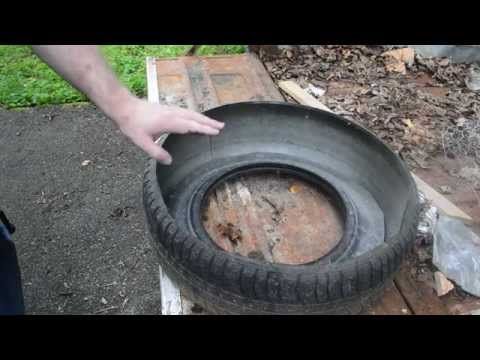 patches further down in this post.
patches further down in this post.
Other alternatives include Tire Slime, which injects the tire with a slimy substance that covers and seals small leaks. While this method is effective on most small leaks, it leaves a mess inside the tire and may bring it out of balance if not installed correctly.
Next, you have the slightly more severe punctures from hitting a dry branch, a piece of rebar, or something in that category. The hole is typically between ¼ of an inch to ½ inch in diameter.
This type of puncture will cause your tire to deflate in seconds and may or may not be so easy to repair.
As long as the puncture has a round shape and is not larger than the diameter of your thumb, you will likely have a good chance of fixing it using a tire patch. However, it is not recommended to patch a hole bigger than ¼ inch in diameter for on-road or high-speed use.
Any puncture larger than a small screw or nail should be patched for a proper seal. While a sting plug may be able to seal the leak enough to bring you home, it needs to be replaced with an appropriate patch plug as soon as possible.
While a sting plug may be able to seal the leak enough to bring you home, it needs to be replaced with an appropriate patch plug as soon as possible.
With large punctures, we refer to holes bigger than the diameter of your thumb. This type of damage typically happens from tearing or slicing rather than a clean poke-through.
Tears or slices typically occur when spinning the tire on a sharp rock, dry branch, or a pointy or sharp metal object.
Most tire manufacturers don’t recommend patching larger punctures or tears because of the permanent damage to the tire’s inner structure that cannot be repaired with a patch.
Before discarding your torn or severely punctured ATV tire, consider looking into products such as Glue Tread External patch kit (link to Amazon).
Leaks around the rim’s bead are commonly caused by corrosion, debris, or a damaged rim.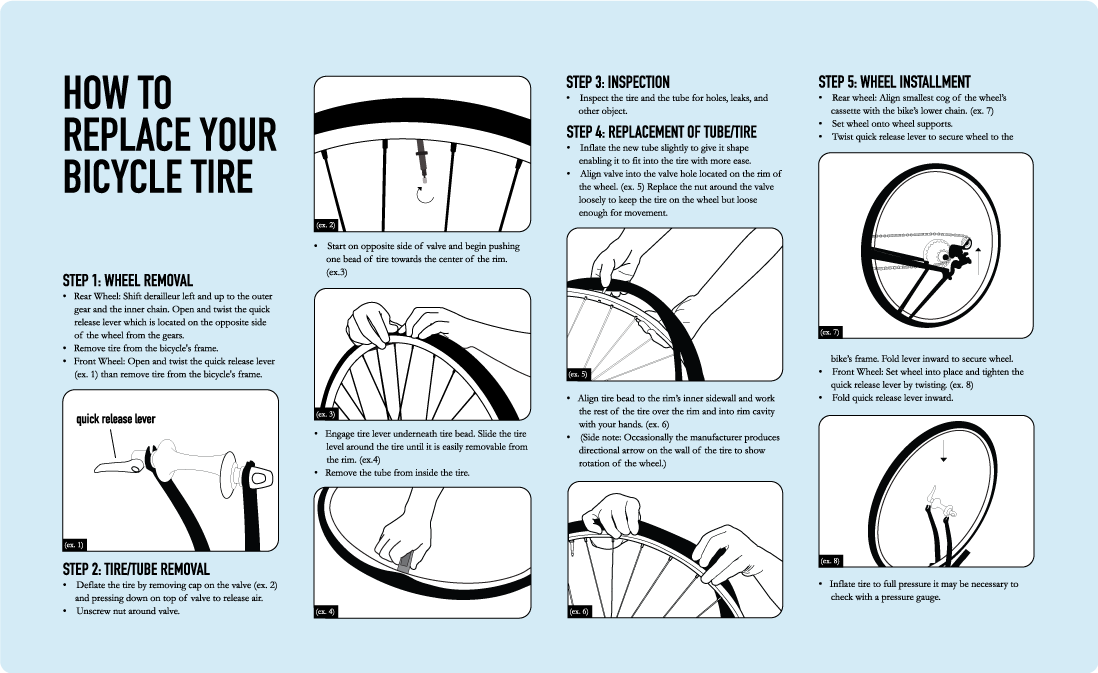 This type of leak typically drains the tire slowly over several hours or even days.
This type of leak typically drains the tire slowly over several hours or even days.
Products such as tire slime or similar work in many cases but will leave a mess when it’s time to replace the tire.
Check this post to learn more about properly fixing this type of leak.
String plugs or any other style of tire plug where the plug is installed from the outside are only recommended as emergency repairs to get your ATV back home or to the nearest tire shop.
While string plugs are not intended as a permanent repair, a properly placed plug will likely last the tire’s lifetime. This type of repair can be sufficient for off-road or at slower speeds.
For on-road or high-speed use, it’s always recommended to replace the string plug with a permanent patch as soon as you get the chance.
As speed increases, the rubber in the tire expands, increasing the chance of the plug coming out of the tire.
Traditional patching is when a rubber patch is glued to the inside of a tire using rubber cement.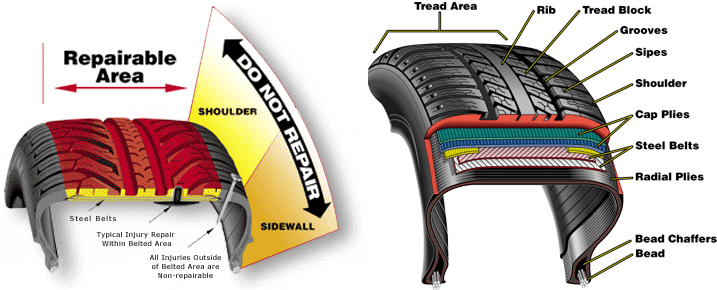 While traditional patches are more reliable than a tire plug, they are not considered safe for on-road or high-speed use. They may, however, work well with slow-speed off-road tires, such as most ATV tires.
While traditional patches are more reliable than a tire plug, they are not considered safe for on-road or high-speed use. They may, however, work well with slow-speed off-road tires, such as most ATV tires.
When used at a higher speed, the problem with traditional patches is that the glue that keeps the patch in place will lose some of its bonding power as the tire heats up, and the patch may come off.
Plug patches combine the benefits of traditional patches and tire plugs in one product. The glued-down patch keeps the plug from detaching from the tire, and the plug helps the patch stay secure to the tire.
Due to the rough terrain that ATV tires are subject to, getting a rip or puncture in tires is not uncommon. However, rips are especially mind boggling for ATV owners who recently bought new tires. Get new tires is pricey and patching tires seems to be more economical, but can ATV tires actually be patched?
The good news is that ATV tires can be patched much like a regular car tire. Depending on the quality of the patch, the repair may even last a while before you have to worry about it. Patching an ATV tire can save you some money if you learn to do it yourself.
Depending on the quality of the patch, the repair may even last a while before you have to worry about it. Patching an ATV tire can save you some money if you learn to do it yourself.
Patches aren’t permanent, especially for ATVs that are often driven on rocky terrain. If the patch doesn’t break, it’s possible to keep your tire until it’s time to change to a new one, although it’s recommended to get a new tire.
In this post, we will go over everything you need to know about patching up your tires.
Patching vs Plugging ATV TiresThere is a slight difference between patching and plugging of tires. Patching is usually done from the inside of the tire and on rips or sidewall tears. These rips will require a larger patch to cover the rip.
Plugging is usually done on the outside and works best for hole punctures caused by spikes or other sharp objects. The repair of these kinds of damages are usually pretty straight forward and requires a tire plug kit.
If you have tubeless tires, patching from the outside is probably the easiest option. You don’t need to remove the wheel. All you need is a tire repair kit and some CO2 cartridges.
No matter which tire repair kit you choose, it will usually come with the following items:
Here are the steps you need to plug your tire using the tire repair kit:

Sidewall rips and tears are sometimes unavoidable and if you’re using tubeless tires, you need to be prepared to fix rips on the fly.
For slidewall rips, it’s best to patch the tire from the inside. This minimizes the chances that the patch will rub other objects outside of your tire, making your patch more secure.
For this fix you’re going to need to remove your tire from the rim. It’s recommended that you practice this at home by deflating your tires, that way you will know what to do even if you’re stranded in the middle of nowhere.
It’s recommended that you practice this at home by deflating your tires, that way you will know what to do even if you’re stranded in the middle of nowhere.
For removing the tire from the rim, you will need two tire irons with flat blades that will be used to wedge the tire out of the rim.
Here are the steps you need to follow if you want to remove your ATV tire from the rim.
Once you have removed the tire, the next step is to patch it from the inside. You will need a tire patch kit for this procedure. A tire patch kit will usually come with the following items:
You will need a tire patch kit for this procedure. A tire patch kit will usually come with the following items:
Here is how you would use the tire patch tool:

Once your tire is patched and ready to be placed back onto the rim. The steps to do this is basically the reverse of removing the tires.
Here are the steps for installing the ATV tire back onto the rim:
It’s all fun and games when you’re riding near your home. Even if your tires rip or puncture, you will be able to quickly run home and get the supplies you need to fix them.
However, if your riding in a remote area, you wouldn’t want to be stranded with a 500 pound machine. Therefore, it’s a good idea to bring along a few items with you if you’re planning for a long trip.
Here is a list of things you bring with you. You can put them in a bag strapped to your ride:
The above list provides the basics of what you’ll need for repairing tires. Before you go, do some planning, get an idea of the area and terrain you will be riding on and bring the necessary items with you in case you get a flat tire.
Can You Put Tubes in ATV TiresYes, you can put tubes in your ATV tires. Tubes are usually made of latex or butyl rubber. They are inserted inside of your tires and when inflated, provides an extra layer of protection and structural integrity for your tires. They are great if you run into large rips on the sidewall of your tires that may be difficult to patch.
They are great if you run into large rips on the sidewall of your tires that may be difficult to patch.
Keep in mind that if your sidewall rips, you still need to replace your tires or patch it. The innertube is there is maintain the structural integrity until you can get home.
Most ATV tires nowadays are tubeless but it’s not a bad idea to install them.
Should You Slime or Fix a Flat Atv Tire?Slime is a type of tire sealant that you squeeze into your ATV tires or tube. When a puncture occurs, air from inside of the tire will escape through the puncture. If you added Slime to your tires, the air will drive the slime through the hole. As the slime passes through, it dries and plugs the hole.
So should you use Slime on your tires or fix your ATV tires by patching or plugging? The answer to this question depends on the types of damage you have on your tires. Let’s discuss this in detail below:
Advantages of using Slime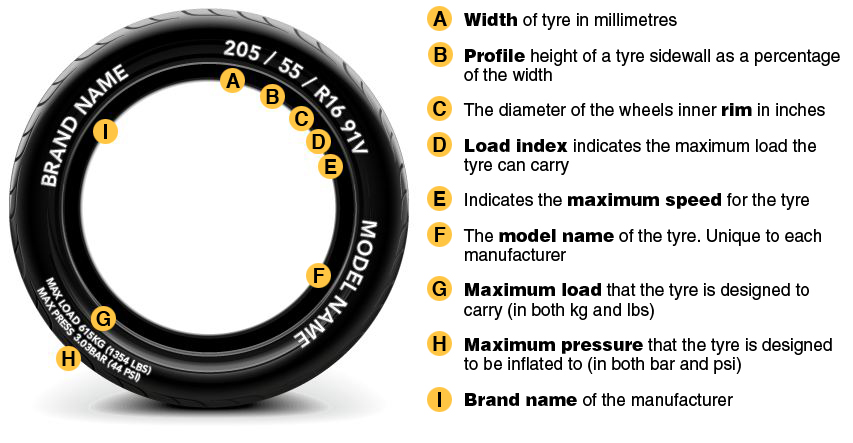 Using slime can provide an easy way for you to seal off the hole.
Using slime can provide an easy way for you to seal off the hole. If you are debating if Slime is right for you, check out Slime’s Official FAQ to learn more about this product.
To use Slime on your ATV tires, follow these instructions:
A typical ATV will require 24oz (710ml) of Slime
Another season of changing shoes is approaching. And you may remember that on one of the tires after the last winter/summer there is a jamb - a small bump. I don’t want to run to the store for the sake of one new tire. We understand. Or maybe it looks even better if repaired?
Yes, not every wheel that has met with a nail, rebar sticking out of the ground or a sharp stone on the road is considered damaged. Everything, of course, depends on the scale of the damage and its location on the tire itself. Some are easily repaired, while others are simply impossible to do - the tire can only be sent to the trash.
Everything, of course, depends on the scale of the damage and its location on the tire itself. Some are easily repaired, while others are simply impossible to do - the tire can only be sent to the trash.
A bulge on a wheel, referred to by drivers as a bump or bulge, is the most common tire sidewall defect. It appears due to a collision with an obstacle or after falling into a pit, more often at high speed. The threads of the sidewall carcass are easily damaged by impact, and the tire at this point can no longer hold the load and air pressure - swelling appears. A small bump sooner or later turns into a big one, and driving with such a defect is dangerous - the wheel can shoot at any moment. At high speed, this is fraught with loss of control, departure from the road and a rollover.
The quality of roads in Kazakhstan contributes to the appearance of bulges on tires
Some types of bulges are repairable, although this is a temporary measure.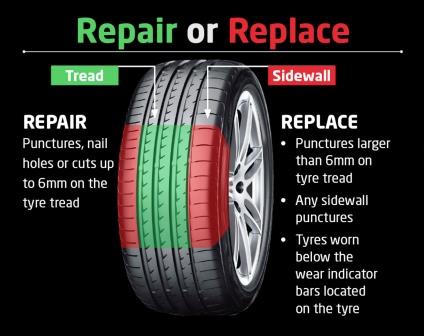 Not a single patch can restore the factory rigidity. Ideally, change the tire.
Not a single patch can restore the factory rigidity. Ideally, change the tire.
Special cord patches can extend the life of a tire with a herniation, even if the swelling has appeared on the tread. The sidewall is a different story. If the swelling appeared at a distance of more than 40 mm from the side, it can be repaired. If not, then the wheel needs to be replaced. Blisters on low profile tires are most often non-repairable.
For maximum safety when riding with a repaired bump, insert the tube. This is an inexpensive and reliable solution. On our market, you can find cameras made in China and Russia, the latter are slightly more expensive, but also of better quality.
The elimination of a side cut is a serious operation, therefore, as in the case of a bump, you will have to go to the professionals. We need cord patches, fortunately in our time they are of different sizes and with a different number of layers. And if you do it wisely, then you can't do without special tools and vulcanization.
A cut, by the way, cannot be healed in all cases. If the gap is in the shoulder area of the tire, it is unlikely that anyone will undertake to repair it, since no guarantees can be given here. However, our Kulibins take on even the most difficult cases, cutting out parts of the sidewalls from the tires and even weaving the cord on their own.
Tire overhaul. We would not put such a wheel on ourselves
Low profile tires can be repaired, but more difficult. A tear in the sidewall is easier to seal on tires with a medium or high profile.
Sometimes a cut is confused with a pluck. This is when the outer layer of the sidewall caught on something sharp, a tear formed, but the frame itself remained intact. There is nothing wrong with that, although the drivers at the tire fitting company successfully repair the cut, for which they take it accordingly.
If a piece of rubber remains on the sidewall, then glue it with ordinary superglue (101st).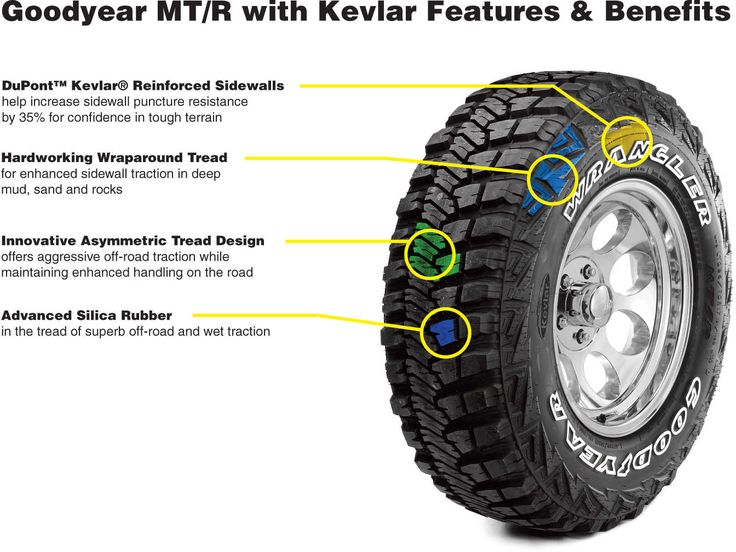 If it came off, then it is better to cover it with raw rubber and vulcanize. Leaving the pluck bare is not recommended, because the tire carcass, often consisting of a metal cord, will quickly corrode.
If it came off, then it is better to cover it with raw rubber and vulcanize. Leaving the pluck bare is not recommended, because the tire carcass, often consisting of a metal cord, will quickly corrode.
In Europe, defective or used tires are perforated before being sent for scrap to prevent their resale and possible operation. But they don’t know that we have such holes on the sidewall patched once or twice
Cuts and hernias are not the only possible damage to the side of the tire. You can also spoil the side ring, in the process of changing shoes, for example. If it’s for garlic, then such a tire is already dangerous. Sooner or later, the tire pressure and the load in motion will start to squeeze the rubber off the rim - a wheel explosion can occur.
This ailment is repaired if the wire ring - the base - is intact. There are no special technologies and materials to correct this particular problem, but most often craftsmen use a two-component composition for chemical (also called cold) vulcanization. After mixing, the mass is pressed into a fat-free damage. Compound manufacturers recommend waiting 72 hours before mounting a tire. Of course, our masters do not pay attention to this condition - they put the tire right away. And it’s good if the wheel is flat because of this at night in the parking lot, and not on the road.
After mixing, the mass is pressed into a fat-free damage. Compound manufacturers recommend waiting 72 hours before mounting a tire. Of course, our masters do not pay attention to this condition - they put the tire right away. And it’s good if the wheel is flat because of this at night in the parking lot, and not on the road.
If the side ring tears are barely noticeable, but the wheel still deflates, then you can use a special liquid - a bead seal designed to seal a tubeless tire.
These seals have been used in motorsport for some time. In particular, in the American Formula D Drift Series, drivers used compounds to keep the tire on the rim even with minimal tire pressure. Now they are banned.
Pay attention to the left rear wheel of the Nissan Silvia S13. Due to too low pressure, it was literally taken off the disk under load
Every schoolchild has faced this problem when patching the inner tube of his bike after hitting something sharp. Repairing a car tire puncture with your own hands will also not be difficult even on the road. But for this you will need a pump (or compressor) and a universal tire repair kit with harnesses. All this is sold at any car market or gas station.
Repairing a car tire puncture with your own hands will also not be difficult even on the road. But for this you will need a pump (or compressor) and a universal tire repair kit with harnesses. All this is sold at any car market or gas station.
Repairing a tire on the side of the road with harnesses
The process is simple. If we are talking about the front wheels, then in most cases the wheel can not even be removed, it is enough to turn the steering wheel in the right direction, find the puncture site and carry out repairs. First, the hole is cleaned with a helical awl from the set. The tourniquet itself is smeared with glue and tucked into the eye of the awl, after which it is inserted into the tire hole. With a sharp movement, the tool is removed, and the tourniquet remains in place and clogs the hole. The tails are cut with a knife, but not at the root, it is recommended to leave about 20 mm. The tire is inflated and checked.
Sometimes a nail or self-tapping screw clogs the hole by itself, remaining in it. If you see a hat in a tread, do not rush to pull it out. While the pressure is holding, move to vulcanize. And sometimes they drive with a screw in a tire for weeks.
If you see a hat in a tread, do not rush to pull it out. While the pressure is holding, move to vulcanize. And sometimes they drive with a screw in a tire for weeks.
Repair of a puncture at a tire shop
Punctures are also repaired with harnesses at a specialized service, although among professionals such repairs are not considered long-term. After a few months, the flagella dry out and can let air through. There are more advanced methods like cold and hot vulcanization. The latter is more reliable. In this case, the hole is sealed with an elastic patch, and the funnel from a foreign object is filled with a special compound. After that, a vulcanizer is put on the tire, it heats up the rubber and solders it.
In addition to the plaster, the puncture is also repaired with special cord fungi. Craftsmen process the puncture site: drill it and treat the surface with a tool to roughen it. Then the repair area is lubricated with glue (it is also called cement) and a fungus is introduced.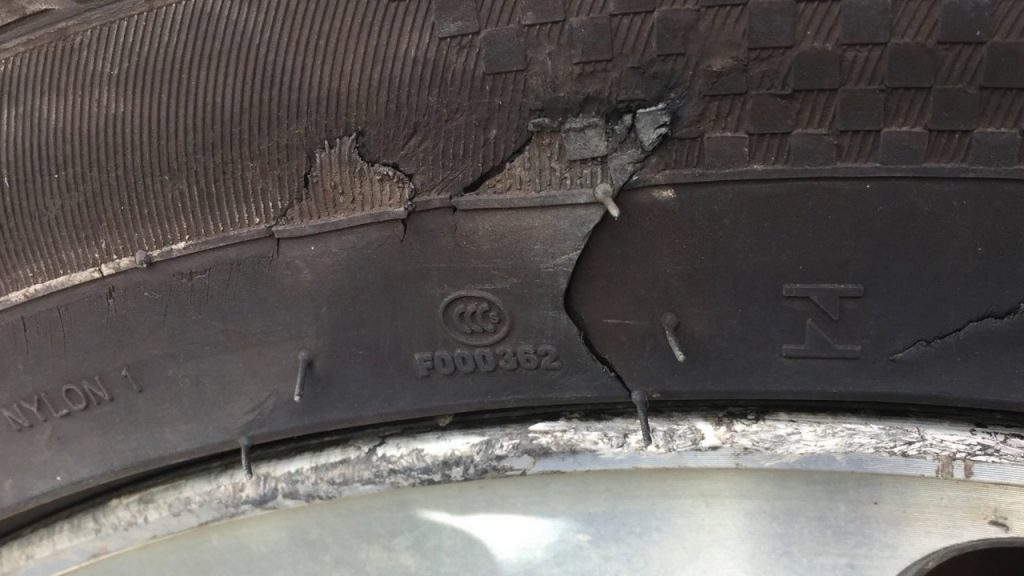 This is done from the inside of the tire. The cap of the fungus is rolled, and the excess legs are simply cut off from the outside.
This is done from the inside of the tire. The cap of the fungus is rolled, and the excess legs are simply cut off from the outside.
Puncture repair with sealant
With the advent of tubeless wheels, and later run flat tires, many automakers began to abandon spare wheels. Instead, repair kits with compressors are supplied with the machines. A repair kit is essentially a bottle of pressurized sealant. Later, such spray cans began to appear on the shelves of ordinary car dealerships.
This method has not taken root in the CIS, because the condition of the roads makes it necessary to have at least a stowaway in the kit, but it can also be considered as a method of repair on the road.
The car must be jacked up and sealant must be pumped into the damaged wheel through the nipple. Next, you should spin the wheel, then pump it up, lower the car and drive a few hundred meters. If the tire tightness has not been restored, repeat the procedure.
For commercial vehicles, cutting the tread with a special device (regrower) is a common thing. Moreover, such tire retreading is provided by the factory (marked REGROOVABLE on the sidewall) to increase the service life. But there are entrepreneurs who undertake to deepen the grooves in tires for passenger cars. But they are not intended for such an operation. Often used tires for sale are “refreshed” in this way. Be careful!
What is the threat?
The worst option is that the retreaded tire will shoot out on the road, as the master can damage the undertread layer when deepening the grooves. Such a tire will not be able to hold pressure at some point. There will be a boom! At best, the tire will indeed last a little longer, but is the game worth the candle? We think it's not worth it.
How is cutting made?
A regrower is used to cut the tread. Roughly speaking, this is a large soldering iron with interchangeable tips of various shapes. It goes through rubber like a knife through butter.
Roughly speaking, this is a large soldering iron with interchangeable tips of various shapes. It goes through rubber like a knife through butter.
If the tire is for passenger cars, then it is worth taking on a regrower only in one case - when part of the tread pattern was welded with "new" rubber during repair. This is where threading comes in handy in order to restore the grooves and symmetry of the tread.
Vehicle operation is prohibited if:
- tires have a residual tread height of less than 1.6 mm;
- tires have punctures, cuts, ruptures that expose the cord, as well as delamination of the carcass, delamination of the tread and sidewall;
- tires in size or load capacity do not match the car model;
- tires of various sizes, designs (radial, diagonal, chamber, tubeless), models, with different tread patterns, winter and summer, studded and non-studded, new and restored, are installed on one axle of the car;
- Tires retreaded according to the second repair class are installed on the front axle.
What is a second class repair?
This is the case when the carcass of the tire is restored after serious damage. A side cut (or tear) is a serious damage to the tire carcass.
October 19, 2018
In the last article, we discussed what to do when an ATV tire is punctured, but punctures and cuts are different.
Side cuts are considered the most unpleasant, as their recovery is complicated by the specific structure of the tire. The sidewalls of the tire must be elastic, as they take part of the road load.
A common puncture in the sidewall of an ATV tire is rare.
Tire sidewalls are more likely to be cut than punctured. In case of a side puncture or cut, the tire must be changed, as its reliability is significantly reduced, and it will not withstand the loads for which it is designed.
But what if you are far from civilization?
There is a method that will reliably repair a tire, but it will be a longer procedure than a simple ATV tire puncture repair.
Side cuts often occur in the mountains where there is kurumnik, since ATV tires are designed to operate at low pressure, the tire bulges very much when riding and can go under a sharp stone, which will create a side cut.
So, what is needed for the repair:
ATV tire side cut repair sequence:
